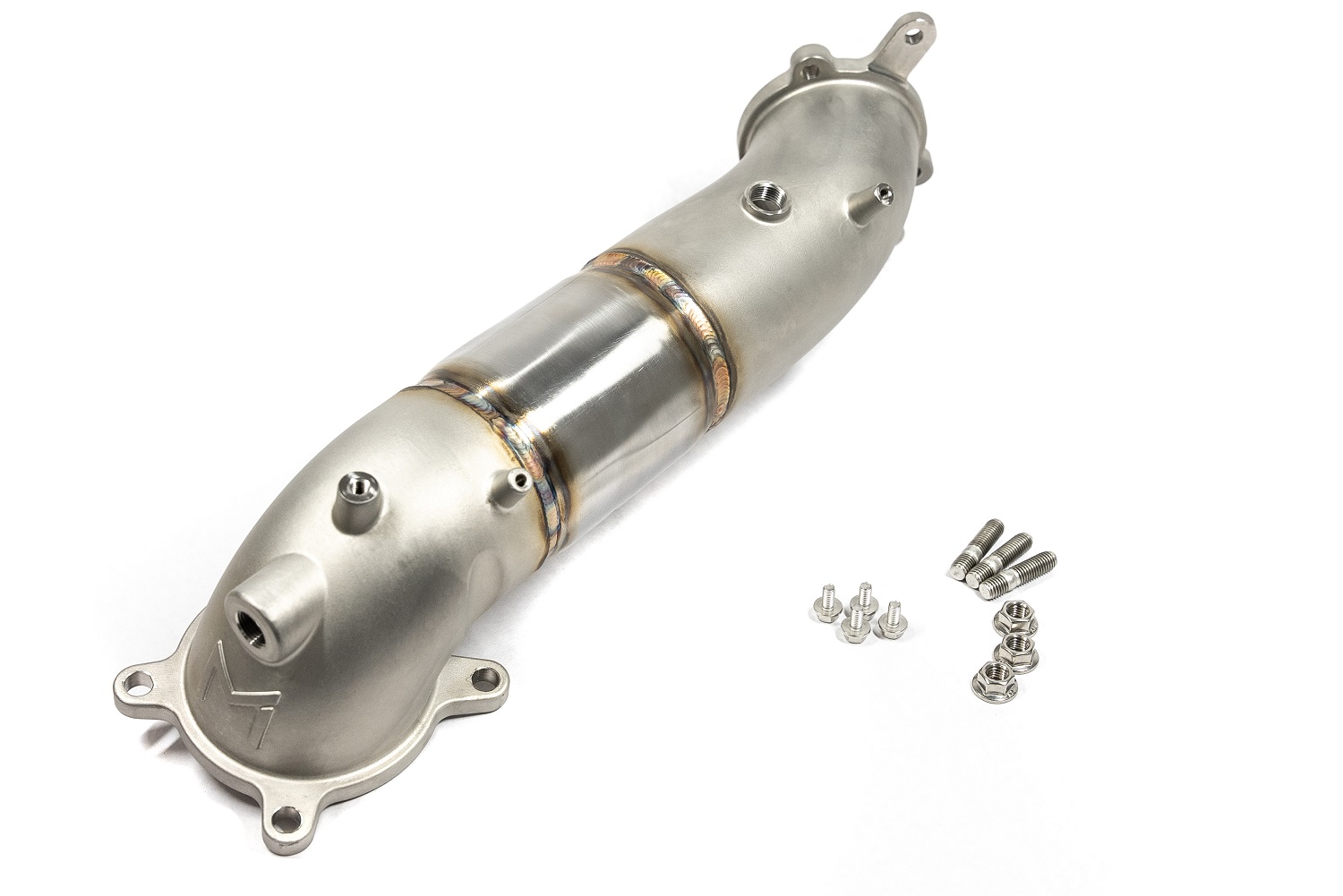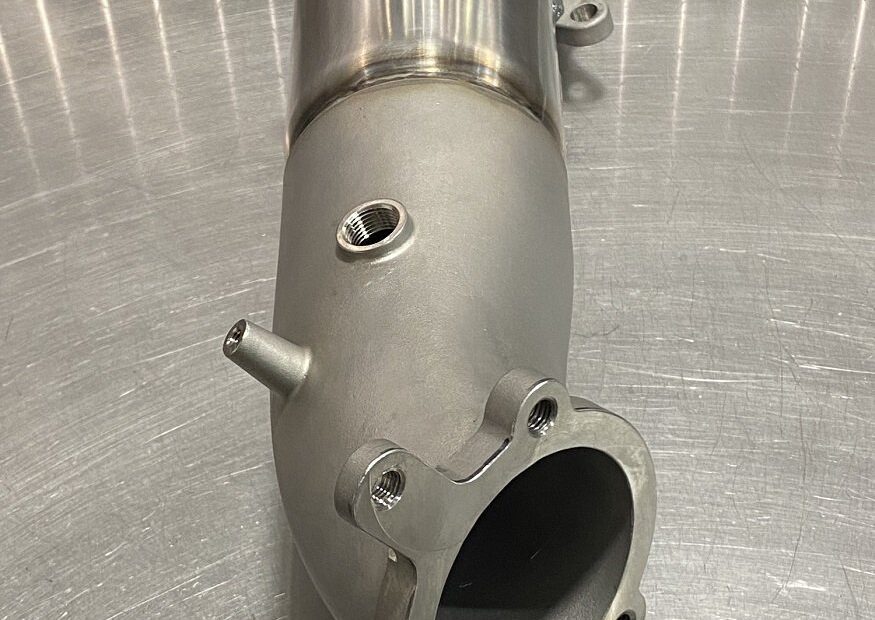The best type of downpipe is one that is made from high-quality materials and properly sized for your specific needs. It should be durable, easy to maintain, and able to handle the volume of water that your gutters collect.
Additionally, downpipes should be installed at a sufficient angle to promote proper water flow and prevent clogging. By choosing a downpipe that meets these criteria, you can ensure efficient rainwater drainage and protect your property from potential water damage. So, it is crucial to select a downpipe that is designed and installed correctly for optimal performance.
Why Downpipes Matter For Effective Drainage
Downpipes play a vital role in effective drainage by channeling rainwater away from buildings for proper disposal. They are an important component of a drainage system, ensuring that rainwater does not accumulate on roofs or around the foundation. By effectively capturing and redirecting rainwater, downpipes prevent damage to the building structure, as well as basement flooding and erosion issues.
Different types of downpipes, such as plastic, copper, or galvanized steel, offer varying levels of durability and aesthetics. When choosing the best downpipe, factors like climate, building location, and personal preferences should be considered. Proper installation and regular maintenance are essential to ensure the downpipes function optimally and contribute to the overall effectiveness of the drainage system.
Overall, selecting the right type of downpipe is crucial for maintaining an efficient and long-lasting drainage system.
Factors To Consider When Choosing A Downpipe
Factors to consider when choosing a downpipe include material options, durability, maintenance, aesthetics, and architectural compatibility. The material options for downpipes vary, with popular choices including PVC, aluminum, copper, and galvanized steel. It’s important to evaluate each material’s durability, as some may be more prone to rust or damage over time.
Maintenance considerations should also be taken into account, as certain materials may require more regular cleaning or upkeep. Additionally, the aesthetics of the downpipe should align with the overall architectural style of the building. It should blend seamlessly with the design while still effectively carrying water away from the structure.
By carefully considering these factors, you can ensure that you choose the best downpipe for your specific needs.
Pvc Downpipes
PVC downpipes offer cost-effectiveness and easy installation, making them a popular choice among homeowners. With their lightweight and flexible nature, PVC pipes are easy to handle and connect, cutting down on labor costs. They are also resistant to corrosion and rust, ensuring durability over time.
However, it is important to consider the impact on drainage performance. PVC pipes may not be as efficient as other options when it comes to diverting large volumes of water. In areas prone to heavy rainfall or where the downpipe needs to handle a significant amount of water, other materials like cast iron or copper might be a better choice.
These materials offer better flow capacity and durability, although they may come with a higher price tag. Ultimately, the type of downpipe that is best depends on factors such as budget, location, and specific drainage requirements.
Aluminum Downpipes
Aluminum downpipes offer several advantages and a few drawbacks. One of the key benefits is their resistance to corrosion and weathering, ensuring long-lasting durability. Additionally, these downpipes can be easily customized in terms of color, allowing homeowners to match the exterior of their property or create a unique look.
However, it is important to note that aluminum downpipes may not be as sturdy as other materials and can be prone to dents or damage. Despite this, their lightweight nature makes installation easier and more cost-effective. When considering what type of downpipe is best for your needs, taking into account the pros and cons of aluminum downpipes is crucial.
Ultimately, it’s important to examine your specific requirements and the specific conditions your downpipes will be subject to before making a decision.
Cast Iron Downpipes
Cast iron downpipes have a historic significance and appeal that cannot be matched by other materials. Their longevity and strength make them a durable choice compared to alternatives. However, they do require regular maintenance and upkeep to ensure their continued performance.
With proper care, cast iron downpipes can last for decades, adding to the charm of a building. Their robustness also provides added protection against weathering and damage over time. Whether it’s for aesthetic reasons or durability, cast iron downpipes are an excellent choice for homeowners seeking a timeless and reliable option.
Their ability to withstand the test of time sets them apart from other downpipe materials on the market.

Credit: store.27won.com
Evaluating Your Drainage Requirements
Evaluating your drainage requirements involves considering the volume of rainwater to be managed and analyzing the slope and size of the roof area. Understanding local building codes and regulations is also crucial. By assessing these factors, you can determine the ideal type of downpipe for your needs.
Proper drainage is essential to prevent water damage and flooding around your property. It ensures that rainwater is efficiently channeled away from your home or building. Taking into account the amount of rainfall your area receives, as well as the shape and dimensions of your roof, will help you select the most suitable downpipe system.
Compliance with building codes and regulations ensures that your drainage system is up to standard and meets any necessary requirements for safety and functionality. Make informed decisions based on a thorough evaluation of your specific drainage needs to ensure optimal performance and longevity of your downpipe system.
Considering Budget And Aesthetics
When considering the best type of downpipe, it’s crucial to look at budget and aesthetics. Cost-effectiveness plays a significant role in the decision-making process. Additionally, it is important to choose a downpipe that enhances the building’s visual appeal. Exploring color and design choices can help create a cohesive and attractive exterior.
By weighing these factors together, you can find an option that fits both your budget and desired look for the building. Whether it’s a modern, sleek design or a more classic style, there are various downpipe choices available that can meet your needs.
Ultimately, the best downpipe is one that strikes the perfect balance between cost and aesthetics, creating a functional and visually pleasing addition to your building.
Seeking Professional Advice
Seek professional advice from drainage experts and contractors for the best type of downpipe. Their expertise will help you make an informed decision when it comes to installation and maintenance.
Frequently Asked Questions For What Type Of Downpipe Is Best?
What’S Better Catted Or Catless Downpipes?
Catless downpipes provide better performance, increased horsepower, and louder exhaust sound compared to catted downpipes.
Do Different Downpipes Make A Difference?
Yes, different downpipes can make a difference in terms of performance and efficiency.
Are Round Or Square Downpipes Better?
Round downpipes are generally better as they have more capacity and are less prone to clogging.
Is Catless Downpipe Bad For Engine?
A catless downpipe can be harmful to the engine due to increased emissions and decreased performance.
Conclusion
To determine the best type of downpipe for your needs, consider key factors such as material, diameter, and installation requirements. Stainless steel downpipes offer durability and resistance to corrosion, making them a popular choice. Aluminum downpipes are lightweight and cost-effective, but may require regular maintenance.
PVC downpipes are easy to install and require minimal maintenance, making them suitable for DIY enthusiasts. Your choice should also account for the diameter, as larger pipes can handle greater volumes of water. Ultimately, the best downpipe will depend on your specific requirements and budget.
Remember to consider your climate, the size of your roof, and any local building regulations. By carefully evaluating these factors, you can choose a downpipe that not only efficiently channels rainwater away from your home, but also adds to its overall aesthetic appeal.
